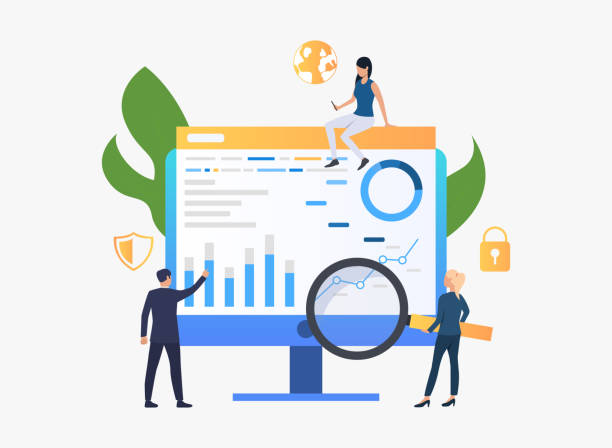Introduction and the Importance of a Unique Personal Website Design
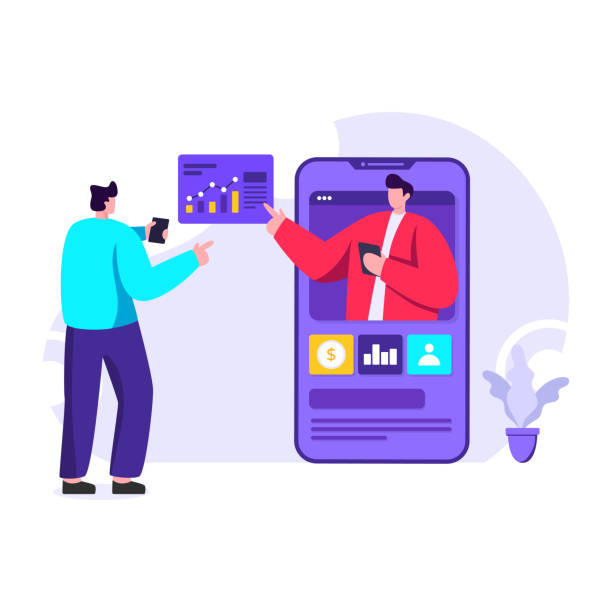
In the current digital age, having a strong online presence is no longer an option, but a necessity.
Among various tools, personal website design emerges as the most powerful tool for #branding, #networking, and #showcasing_abilities.
This website is not just your virtual storefront, but also a platform for sharing your views, portfolios, and even selling your products or services.
The importance of a well-designed personal website goes beyond an online resume; it’s a fully controlled space that allows you to tell your story in a unique and engaging way.
Unlike social networks with their own rules and algorithms, a personal website is a safe haven where you can shape your digital identity without limitations.
This space allows you to showcase your expertise in a more in-depth manner and enhance your credibility in your field.
Whether you are an artist looking to display your works, a writer wanting to introduce your books, or an expert planning to share your knowledge with others, a personal website is an unparalleled tool.
In fact, personal website design is a strategic tool for creating a professional and reliable image in the minds of your audience.
This explanatory approach helps you understand the importance of this platform and take steps to build it.
Analyses show that individuals with personal websites are recognized as significantly more credible in their professional field and gain more opportunities for professional collaborations.
Did you know that 94% of a first impression of a company is related to its website design?
Rasaweb, by offering professional corporate website design services, helps you create the best first impression.
✅ Create a professional and reliable image of your brand
✅ Easier attraction of potential customers and improvement of online standing
⚡ Get free corporate website design consultation
Initial Planning Stages for Personal Website Design

Before you embark on your personal website design, there’s a crucial stage that is often overlooked: planning.
This initial stage lays the foundation for your website’s success.
First, define the main goal of your website.
Do you want to showcase your artistic portfolio, have a blog to share your knowledge, or offer consulting services? The answer to this question will determine your design and content path.
Second, identify your target audience.
Who will visit your website? Professionals, employers, potential clients, or the general public? Understanding your audience helps you choose the appropriate language, style, and content.
Third, research competitors and similar websites.
This is an important educational and analytical part that gives you new ideas and helps you identify the strengths and weaknesses of other websites and learn from them.
Think about how you can differentiate yourself and what value you will offer your audience that others don’t.
Fourth, prepare an outline of your website’s structure.
What pages do you need? (e.g., Home, About Me, Portfolio, Contact Us, Blog).
How will these pages connect? Creating an initial sitemap makes the design process much smoother.
These guidelines help you enter the implementation phase with a clearer vision and specific goals, preventing wasted time and energy.
Detailed planning is the key to efficient and effective personal website design.
Choosing the Right Platform and Tools for Personal Website Design
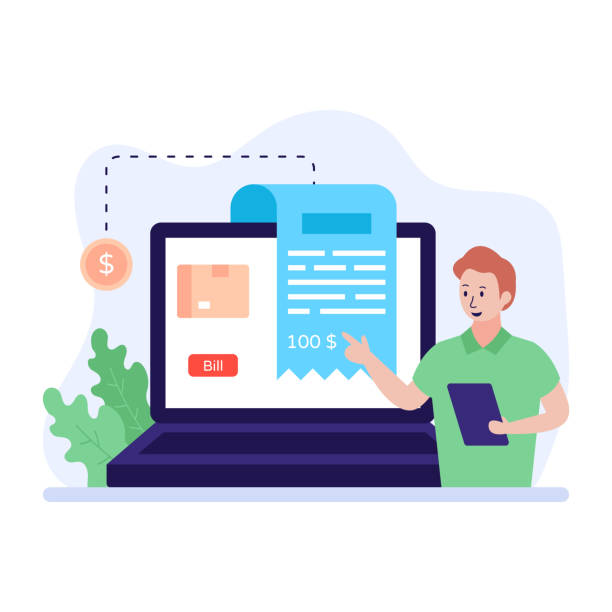
The next step in your #personal_website_design journey is choosing the right platform and tools.
This decision will greatly impact the flexibility, ease of use, costs, and future capabilities of your website.
There are numerous options available, each with its own advantages and disadvantages, and their selection depends on your technical knowledge level, budget, and specific needs.
The three main categories of platforms are: Content Management Systems (CMS), Website Builders, and coding from scratch.
One of the most popular options is WordPress.
WordPress is a powerful and flexible CMS used by over 40% of the world’s websites.
With thousands of themes and plugins, this platform provides countless customization options and is suitable for bloggers, portfolios, and even small online stores.
Learning it can be a bit time-consuming for beginners, but plenty of educational resources are available.
Another option is website builders like Wix, Squarespace, or Behance.
These tools, with their Drag-and-Drop user interface and ready-made templates, make personal website design very easy for individuals without coding knowledge.
They usually include hosting, but offer less flexibility than WordPress and may impose limitations on deep customizations.
Finally, coding from scratch (HTML, CSS, JavaScript) is an option that offers the most control and flexibility, but requires high technical knowledge and is more time-consuming.
This method is suitable for developers and those who need very specific features.
Below is a comparative table of these platforms to help you make a better decision:
| Feature | WordPress | Website Builders (e.g., Wix/Squarespace) | Coding from Scratch (Custom Code) |
|---|---|---|---|
| Ease of Use | Medium to Advanced (requires learning) | Very Easy (Drag and Drop) | Very Difficult (requires technical knowledge) |
| Flexibility | Very High (with plugins and themes) | Medium (limited to pre-defined templates) | Very High (full control) |
| Cost | Medium (host + domain + paid plugin/theme) | Medium to High (monthly subscription) | Variable (depends on developer and complexity) |
| Technical Knowledge Required | Medium | Low | Very High |
| SEO Friendly | Very Good (with appropriate plugins) | Good (limited features) | Completely Optimizable (if done correctly) |
| Suitable For | Blog, portfolio, business websites | Quick personal websites, portfolios | Specific and unique projects |
This is an expert decision, and considering your needs and the features of each platform, you can choose the best option for yourself.
Whichever method you choose, ensuring that your website host has the necessary reliability and speed is very important.
Visual Design and User Experience in Personal Websites

After choosing the platform, it’s time for the visual aspects and user experience (UX) in your #personal_website_design.
Good user experience is key to retaining visitors and encouraging them to explore more of your website.
Visual design involves choosing colors, fonts, images, and the overall page layout, which must align with your personal brand.
Use colors that convey your emotions and message; for instance, blue colors for a sense of trust and professionalism, or warm colors for a creative and friendly feel.
Fonts also play an important role in readability and visual appeal; use simple and readable fonts for main texts and more unique fonts for titles.
User experience (UX) means how easy, useful, and enjoyable your website is for the user.
Navigation should be intuitive and simple so that users can easily find what they are looking for.
Clear menus, logical internal links, and distinct Call-to-Action buttons are key components of UX.
Website loading speed is another critical factor; no one likes to wait for a page to load.
Optimizing images, using powerful hosting, and minimizing extra code help increase speed.
Furthermore, your website must be Responsive, meaning it displays correctly on all devices, from desktop computers to tablets and smartphones.
These expert recommendations and guidelines help you have an attractive and user-friendly personal website that converts visitors into loyal customers or fans.
A purposeful visual design and flawless UX demonstrate your professionalism in personal website design.
Did you know that 94% of users’ first impressions of a business are related to its website design? With professional corporate website design by **Rasaweb**, turn this first impression into an opportunity for growth.
✅ Attract more customers and increase sales
✅ Build credibility and trust in the audience’s eyes⚡ Get a free website design consultation!
Creating Engaging and User-Friendly Content for Personal Websites
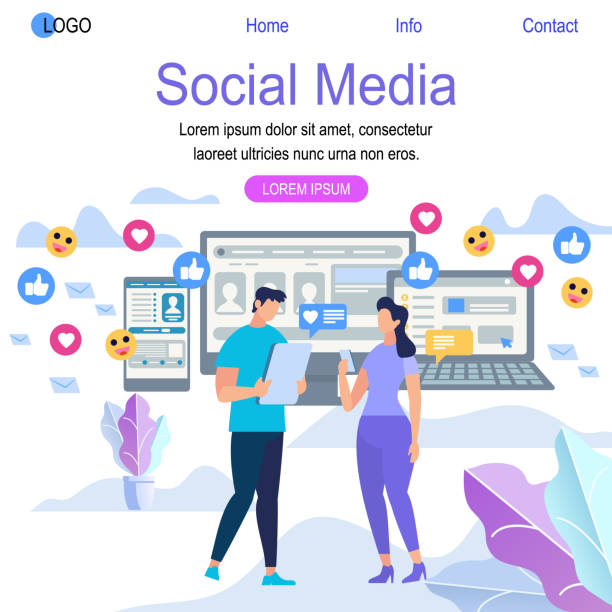
Content is king; this statement especially holds true in the realm of #personal_website_design.
No matter how beautiful and professional your website is, without engaging and user-friendly content, it cannot attract or retain an audience.
Content creation should be carried out with your goals and audience in mind.
If your goal is to showcase a portfolio, don’t forget complete descriptions and high-quality images for each project.
If you have a personal blog, the blog content should be informative, engaging, and relevant to your audience’s interests.
Consider variety in content creation.
You can use a combination of text articles, videos, infographics, podcasts, and image galleries to enrich the user experience and create appeal for various audiences.
For example, an artist can share videos of their creative process in addition to an image gallery, which is both educational and entertaining.
The question you should always ask yourself is: “What value does this content provide to my visitor?” Your content should either solve a problem, provide useful information, be inspiring, or simply be entertaining.
Use a tone that aligns with your brand personality – are you formal and professional or friendly and approachable? Regularly update your content; this not only helps improve your website’s ranking in search engines but also gives visitors a reason to return.
Your personal website should not be a static page, but rather a living, dynamic entity that is constantly growing and evolving.
This descriptive and engaging approach will be the beating heart of your personal website design.
Search Engine Optimization (SEO) for Personal Websites
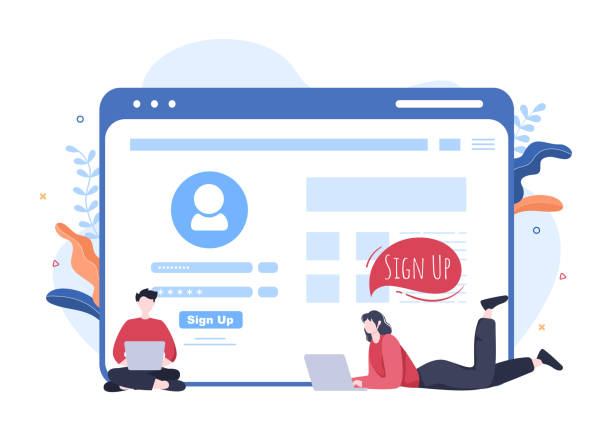
Having a great #personal_website_design and engaging content isn’t enough; you need to ensure people can find it.
This is where Search Engine Optimization (SEO) comes into play.
SEO is a set of techniques that helps your website achieve higher rankings in Google, Bing, and other search engine results, driving more organic (free) traffic to your site.
For a personal website, SEO holds special importance because it helps you appear as an expert or a recognized figure in your field.
SEO begins with Keyword Research.
Identify the words your target audience searches for to find content relevant to your field.
Naturally incorporate these keywords into your page titles, headings, main text, and Meta Descriptions.
Also use longer keyword phrases (Long-tail Keywords) that are more precise and targeted.
Ensure your website is technically optimized for search engines; this includes high loading speed, a clean URL structure, XML sitemaps, and the use of appropriate tags (like H1, H2, and Alt tags for images).
The website’s Mobile-Friendliness is also an important ranking factor, as a significant portion of searches are conducted via mobile.
Optimizing images and videos for the web (reducing size without compromising quality) also helps site speed.
Creating Internal Links between different pages of your website and striving to acquire Backlinks from other reputable websites increases your site’s credibility in Google’s eyes.
These expert and educational recommendations will form a strong foundation for the SEO of your personal website design.
Ongoing Maintenance and Updates for Personal Websites
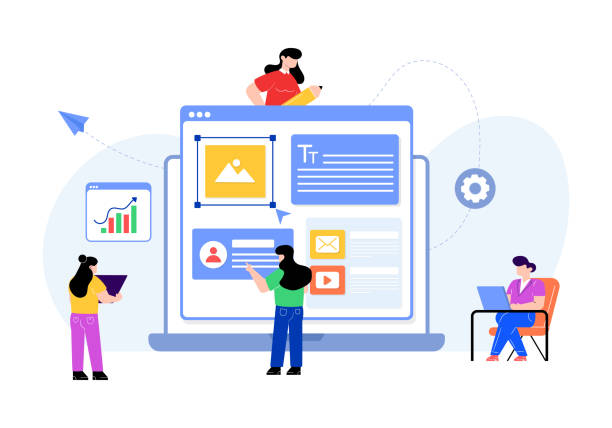
Building and launching a #personal_website is just the beginning; regular maintenance and updates ensure its longevity and effectiveness in the long run.
Many website owners forget about maintenance after launch, which can lead to reduced security, decreased performance, and even loss of visitors.
Ongoing updates include updating the platform (like WordPress), themes, and plugins.
These updates often include security fixes, performance enhancements, and new feature additions, which are vital for maintaining the health of your website.
Ignoring them can make your website vulnerable to cyber-attacks or lead to technical incompatibilities.
Another important aspect is regular Backups of website data.
Always have a backup copy of your files and database in a secure location.
This allows you to quickly restore your website in case of any issues (e.g., hacker attacks, server problems, or human errors).
Performance Monitoring of the website is also very important; using tools like Google Analytics or Google Search Console, you can monitor website traffic, user behavior, and potential errors.
Checking for Broken Links and fixing them, ensuring the correct functioning of contact forms, and continuous optimization of website speed are among other maintenance tasks.
These educational actions and guidelines ensure that your personal website design always remains at its peak performance and provides a flawless user experience.
Below, a checklist for website maintenance is provided.
| Activity | Recommended Frequency | Description |
|---|---|---|
| Software Updates (CMS, theme, plugins) | Weekly/Monthly | For optimal security and performance |
| Full Site Backup | Weekly/Monthly (depending on content changes) | Protecting data against unforeseen incidents |
| Security Check (Malware Scan) | Monthly | Identifying and fixing vulnerabilities |
| Performance Check (Loading Speed) | Monthly | Optimization for better user experience |
| Broken Links Check | Monthly | Ensuring correct navigation and good SEO |
| Contact Forms Check | Monthly | Ensuring correct functioning of communication channels |
| Content Update | Continuously (Weekly/Monthly) | Maintaining site freshness and appeal for users and search engines |
| Stats and Analytics Review | Monthly | Understanding user behavior and improving strategy |
Using a Personal Website for Earning Income and Branding

One of the most intriguing and yet attractive aspects of #personal_website_design is its potential for earning income and strengthening personal branding.
Your website is not just a storefront; it can become a sustainable source of income.
There are numerous ways to earn income from a personal website, which vary depending on your content type and audience.
For example, if your content is educational or analytical, you can generate income through advertising (Google AdSense), Affiliate Marketing by promoting others’ products or services, or even by selling your own digital products such as e-books, online courses, or graphic templates.
Personal branding is another major benefit of personal website design.
Your website is a platform that allows you to introduce your expertise, values, and unique identity to the world.
This is an unparalleled opportunity to showcase your skills and knowledge to potential employers, new clients, or colleagues in your industry.
By regularly publishing expert articles, high-quality portfolios, and success stories, you can position yourself as a Thought Leader in your field.
Personal branding through a website can lead to new job opportunities, speaking engagements at events, collaborations with larger brands, and an increase in your consulting rates.
This is exciting news for those looking for professional advancement.
A personal website gives you complete control over your narrative and image, something less seen on social media platforms.
This analysis shows how an initial investment in time and effort for website design can yield significant financial and professional returns in the long run.
Is your online sales not as expected? With Rasaweb, permanently solve the problem of low sales and poor user experience!
✅ Increase visitor-to-customer conversion rates
✅ Create an enjoyable user experience and boost customer trust
⚡ Act now to receive a free consultation!
Common Challenges and Solutions in Personal Website Design
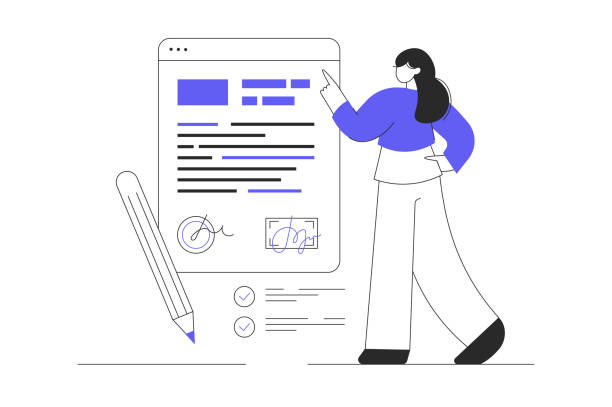
As you embark on your #personal_website_creation journey, you may encounter challenges.
It’s a reality that no project is without obstacles, but recognizing these challenges and having appropriate solutions can smooth the process for you.
One of the most common issues is a lack of time or technical knowledge.
Many people want to have a personal website but think it requires complex programming skills or a lot of time.
Solution: For lack of time, using website builders (like Wix or Squarespace) or platforms like WordPress with ready-made themes can be very helpful.
These tools, with their easy-to-use interface and drag-and-drop functionality, minimize the need for deep technical knowledge.
For a lack of technical knowledge, there are plenty of online educational resources, courses, and YouTube videos to help you acquire the necessary skills.
Another problem is content uncertainty.
Some people don’t know what to put on their website.
Solution: First, consider your target audience and assess their needs.
Then, look at your strengths and expertise.
Create a Content Plan that includes content types (blog, portfolio, about me) and publication schedule.
Starting with a small section and gradually expanding content can also help overcome this challenge.
Website security is also a significant challenge, especially with increasing cyber-attacks.
Solution: Use strong passwords, perform software updates promptly, install security plugins, and use reputable web hosting services that prioritize security.
Also, don’t forget regular backups.
These guidelines will help you approach your personal website design with more confidence and easily overcome obstacles.
The Future of Personal Website Design and New Trends
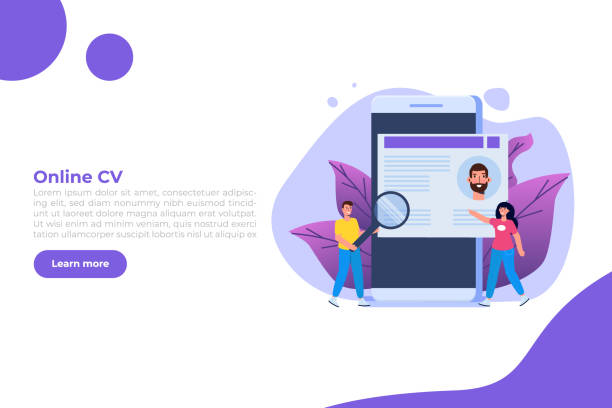
The world of web is constantly changing and evolving, and #personal_website_design is no exception.
For your website to remain attractive and efficient, you need to be familiar with new trends and future technologies.
One of the most important future trends is a greater focus on Artificial Intelligence (AI) and Machine Learning.
AI can play a role in personalizing user experience (such as recommending relevant content based on user behavior), improving SEO (by analyzing search patterns), and even content creation (AI-generated content).
Voice assistants and voice search are also expanding, so optimizing websites for Voice Search Optimization will become increasingly important.
Another trend is Virtual Reality (VR) and Augmented Reality (AR), which may gradually make their way into personal websites, especially for designers, artists, and architects who can showcase their portfolios in a 3D and interactive environment.
Also, website speed and performance will remain a priority.
Ultra-fast websites built with technologies like AMP (Accelerated Mobile Pages) or PWA (Progressive Web Apps) optimize user experience and positively impact search engine rankings.
The focus on privacy and data security will also increase.
Visitors expect their personal information to be protected, and websites must adhere to privacy regulations (such as GDPR).
Finally, Storytelling and creating a deeper connection with the audience through authentic and engaging content will always be important.
These news and analytical trends show what path personal website design will take in the future and how you can prepare your website for success in this dynamic space.
Frequently Asked Questions
| Question | Answer |
|---|---|
| Why should we have a personal website? | A personal website helps you build your personal brand, showcase your skills and portfolio, connect with your audience, and gain new career opportunities. |
| What steps should be taken for personal website design? | Steps include defining the goal, choosing a domain name and host, selecting a platform (e.g., WordPress), designing the user interface, content creation, optimizing for search engines (SEO), and launching. |
| Do I necessarily need to know coding for personal website design? | No, by using Content Management Systems (CMS) like WordPress or Website Builders like Wix and Squarespace, you can design your website without needing to code. |
| What is a Domain Name and how do I choose one? | A domain name is your website’s address on the internet (e.g., yourname.com). It’s best to choose a name that is short, memorable, relevant to you or your business, and has an appropriate extension (like .com, .ir). |
| What is Hosting and why do I need it? | Hosting is a space on the internet where all your website’s files and data (such as images, texts, codes) are stored to be always accessible to users. Without hosting, your website will not be visible. |
| What should a personal website’s content include? | Content usually includes an About Me page, portfolio, services/skills, blog (articles), contact information, and a contact form. |
| How can I optimize my personal website for search engines (SEO)? | By using relevant keywords, producing high-quality content, improving website loading speed, being mobile-responsive, building internal and external links, and optimizing title and description tags. |
| Why is Responsive Design important for a personal website? | Responsive design ensures that your website is displayed correctly on all devices (computer, tablet, mobile) and provides a good user experience, which is also important for SEO. |
| What should I do for personal website security? | Use an SSL certificate (HTTPS), regularly update the platform and plugins, use strong passwords, perform regular backups, and install firewalls or security plugins. |
| How can I increase my personal website’s traffic (visitors)? | Through SEO optimization, content marketing (blogging), social media activity, email marketing, online advertising, and collaboration with other websites. |
And other services of Rasaweb Advertising Agency in the field of advertising
Smart UI/UX: Professional optimization to increase sales using marketing automation.
Smart Advertising Campaign: A fast and efficient solution for user engagement focusing on intelligent data analysis.
Smart UI/UX: A combination of creativity and technology to improve SEO ranking through custom programming.
Smart Google Ads: Revolutionize user engagement with the help of intelligent data analysis.
Smart Direct Marketing: Transform digital branding with the help of SEO-driven content strategy.
And over hundreds of other services in the field of internet advertising, advertising consultation, and organizational solutions
Internet Advertising | Advertising Strategy | Advertorials
Resources
Personal Website Design Guide
Benefits of Having a Personal Website
How to Create a Personal Website?
Key Tips in Personal Website Design
? Are you ready to transform your business in the digital world? Rasaweb Afarin Digital Marketing Agency, with expertise in areas such as responsive website design, professional SEO, and targeted advertising campaigns, offers innovative solutions for your sustainable growth. With us, have a powerful and memorable presence on the web.
📍 Tehran, Mirdamad Street, next to Bank Markazi, Southern Kazeroon Alley, Ramin Alley, No. 6

